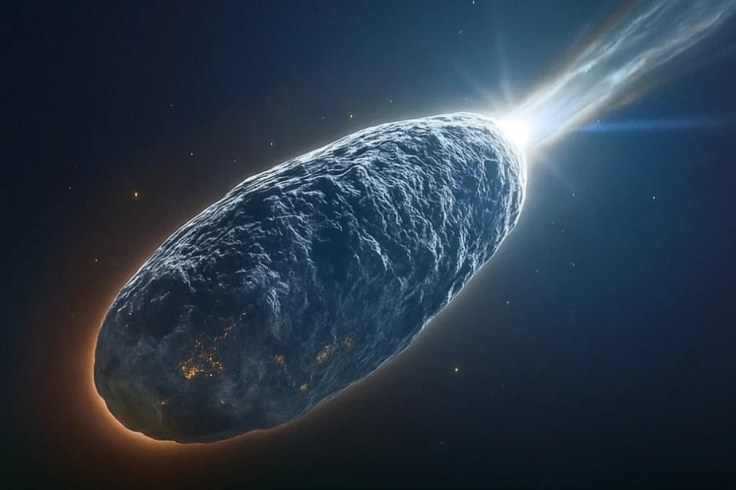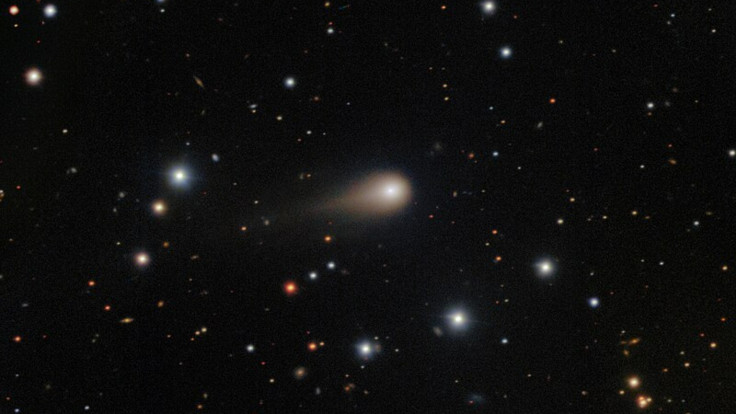3I/ATLAS Mystery: New Analysis Suggests It's Not a Natural Comet, Why?
New spectral data challenges the comet theory. Discover the impossible anomalies of 3I/ATLAS.

For decades, we have looked up at the night sky with a sense of predictable comfort. We understand the mechanics of orbits, the chemical composition of stars, and the dirty snowballs we call comets. However, every so often, the universe throws a curveball that defies our standard models and forces us to question the very nature of what we are observing.
We are currently standing on the precipice of one such paradigm shift. The comfortable silence of the academic mainstream is being disrupted by noise that is becoming impossible to ignore, specifically regarding the object that has captured the attention of independent researchers worldwide: 3I/ATLAS.

The Unsettling Reality of 3I/ATLAS Spectral Anomalies
When we observe a celestial body, we do not just look at its shape; we look at its light. Through spectroscopy, we can break that light down to determine exactly what an object is made of. A standard comet has a distinct chemical fingerprint—usually water vapour, carbon dioxide, and dust. It behaves in a way that is predictable and safe.
However, the narrative that 3I/ATLAS is merely a wandering rock is rapidly crumbling under the weight of new evidence. According to a breaking update from Skywatch Signal, the latest data is refusing to align with natural expectations. The spectral return is not painting the picture of a frozen remnant from the dawn of a solar system.
Instead, it is suggesting something far more complex and, frankly, more anomalous. What makes this particular visitor so disturbing is not just its hyperbolic velocity, but its glaring lack of water ice—a staple of every known comet—and an abundance of carbon dioxide that exceeds standard models by a factor of nearly twenty.

Liena's Analysis: A Turning Point for the 3I/ATLAS Narrative
The true power of modern astronomy no longer lies solely within the walled gardens of government agencies. It lies in the distributed network of skilled civilian astronomers who are watching the skies with unblinkered eyes. This latest revelation hinges on 'Liena's new spectral analysis,' which has been described as 'one of the most important civilian data points we've had on 3I/ATLAS so far.'
This is not a vague observation; it is hard data. Liena's work appears to isolate specific spectral lines that simply should not exist if this were a standard cometary body. Her analysis has detected a distinct and inexplicable separation of metallic elements: a strong signature of nickel with a near-total absence of iron. In natural cometary formation, these two elements are inextricably linked. To find one without the other suggests a refining process rather than a natural accretion.
When independent analysts flagged this data, they identified characteristics that contradict the standard outgassing models used to explain the object's acceleration. The object is exhibiting a 'sunward jet'—a propulsive emission facing towards the star rather than away from it—which defies the thermal physics of natural sublimation. The significance of this cannot be overstated. If the chemical composition does not match a comet, then the acceleration we are witnessing is not due to natural propulsion.
🚨3I/ATLAS Spectral Data This Is Not How a Natural Comet Behaves
— Skywatch Signal (@UAPWatchers) November 17, 2025
Alright. Let’s go through this carefully, because Liena’s new spectral analysis is one of the most important civilian data points we’ve had on 3I/ATLAS so far.
And the conclusions are… uncomfortable for anyone… pic.twitter.com/yPOSTjtOWQ
Beyond the Textbook: What 3I/ATLAS Means for Astronomy
We have reached a juncture where maintaining the status quo requires ignoring the data. As the report states, these conclusions are 'uncomfortable for anyone still insisting this is a textbook comet.' The term 'uncomfortable' is doing a lot of heavy lifting here. It implies that we must now entertain possibilities that were previously relegated to science fiction novels like Rendezvous with Rama.
If 3I/ATLAS is not a comet, we are left with a limited number of explanations, none of which fit neatly into the standard astrophysical curriculum. The spectral data is screaming that this object is unique. Its trajectory is eerily aligned with the ecliptic plane to within five degrees—a navigational precision that is statistically impossible for a random interstellar rock.
Whether it is an interstellar shard of exotic material or something manufactured, the evidence suggests that nature is not the only author of this story. We must remain vigilant and follow the data, even if it leads us into the dark.
The universe is speaking to us, but it is not using the vocabulary of the past. As the data continues to mount, the line between a natural anomaly and artificial design is blurring dangerously. We cannot afford to look away now that the silence has been broken.
© Copyright IBTimes 2025. All rights reserved.


















